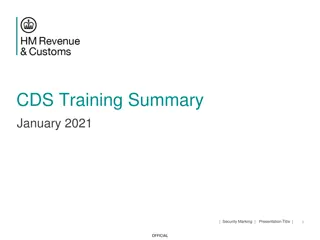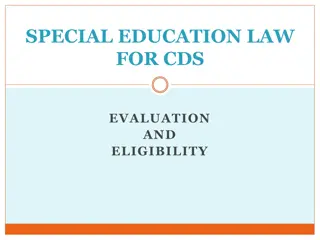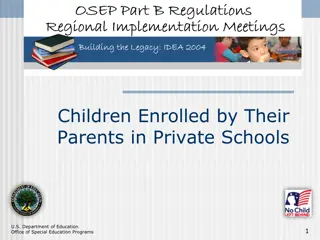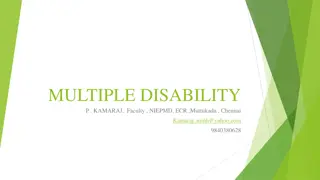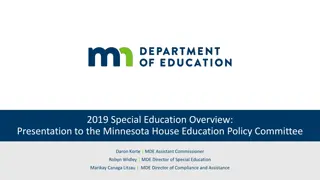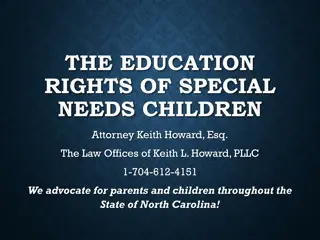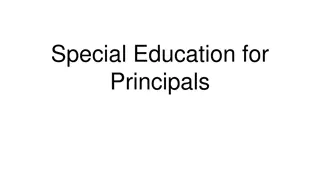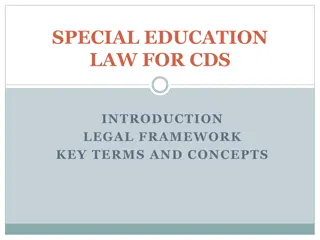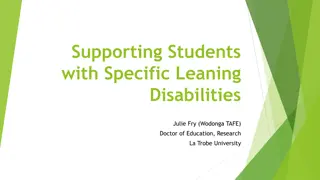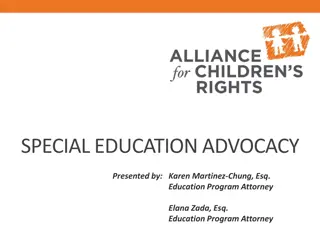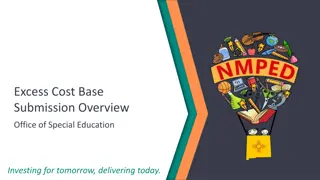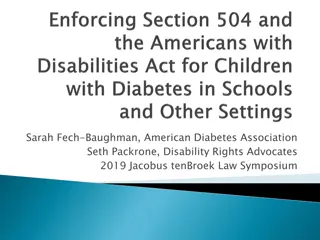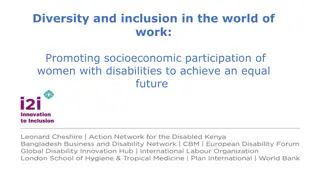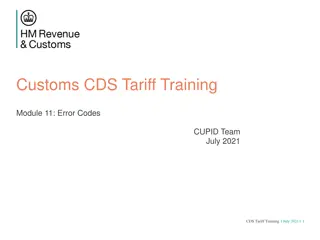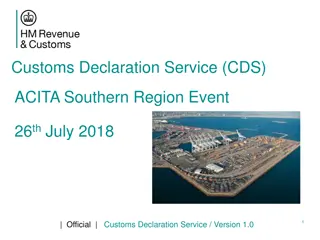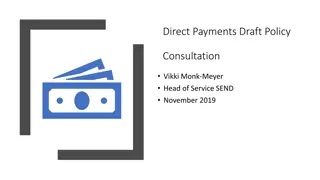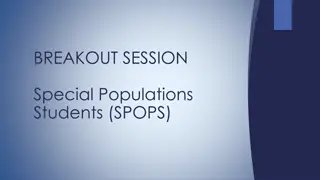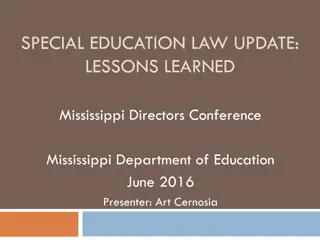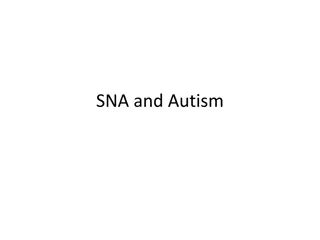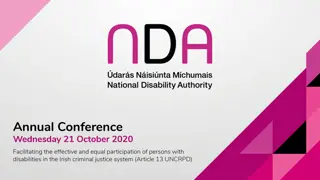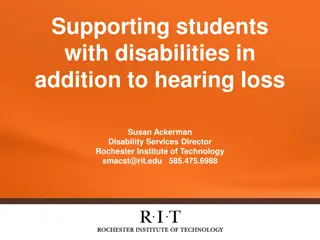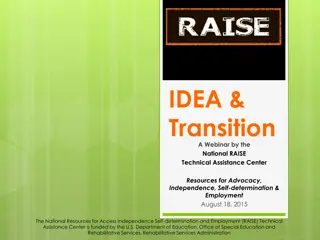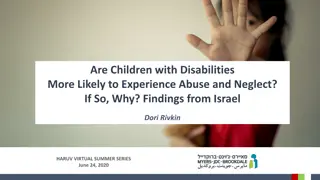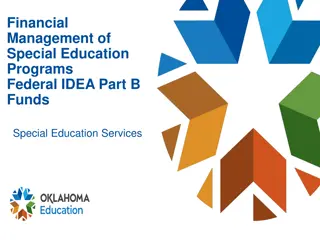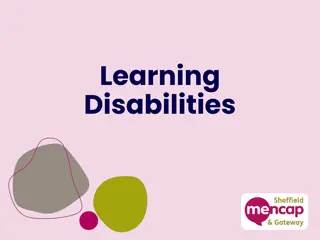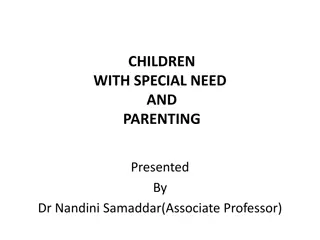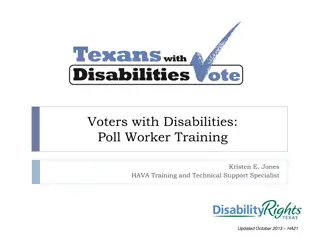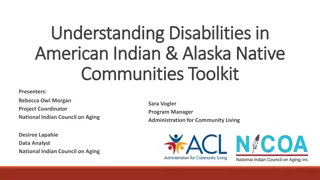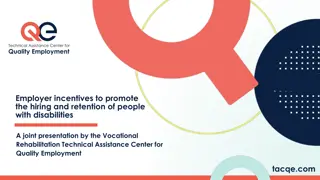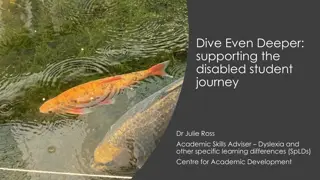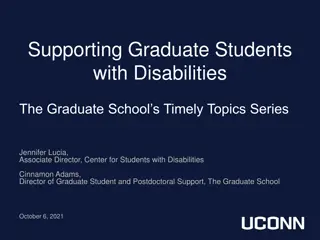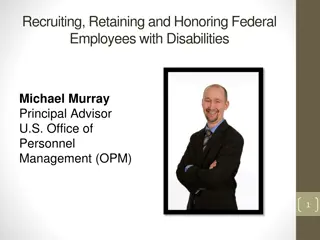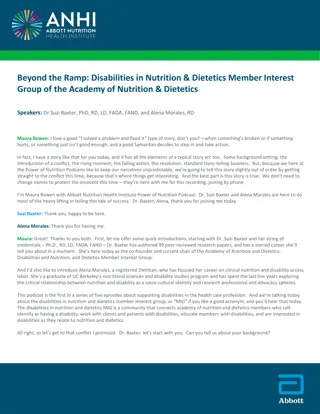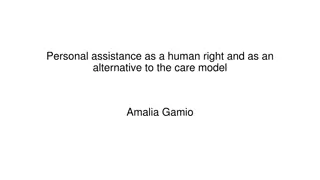Understanding Special Education Law for Children with Disabilities (CDS)
Special Education Law for Children with Disabilities (CDS) emphasizes the FAPE standard, IDEA process, and FAPE requirements such as procedural aspects, substantive standards, and the provision of meaningful educational benefits. Court cases like Rowley (1982) and Endrew F. (2017) have shaped the implementation of Individualized Education Plans (IEPs) to ensure ambitious goals tailored to each student's circumstances. The focus is on providing an appropriate and adequate education to children with learning disabilities while considering their individual capabilities and potential for educational benefit.
Download Presentation

Please find below an Image/Link to download the presentation.
The content on the website is provided AS IS for your information and personal use only. It may not be sold, licensed, or shared on other websites without obtaining consent from the author. Download presentation by click this link. If you encounter any issues during the download, it is possible that the publisher has removed the file from their server.
E N D
Presentation Transcript
SPECIAL EDUCATION LAW FOR CDS FAPE: THE SUBSTANTIVE STANDARD
IDEA Process Locate Identify Evaluate Determine Eligibility Develop IEP Make placement in the LRE Monitor progress Review/Revise IEP as appropriate Reevaluate as appropriate Transition to SAU of residence
FAPE Procedural IEP Team Parent input/participation Consideration of evaluations, other information No predetermination Work toward consensus Where no consensus, SAU makes an offer of FAPE SAU implements plan in timely manner Substantive
FAPE Rowley (1982): We hold that the state satisfies the FAPE requirement by providing personalized instruction with sufficient support services to permit the child to benefit educationally from that instruction. Access and benefit from their education Some (non-trivial or more than de minimis) educational benefit
Endrew F. (2017) A student s IEP: must be appropriately ambitious in light of his circumstances, just as advancement from grade to grade is appropriately ambitious for most children in the regular classroom. The goals may differ, but every child should have the chance to meet challenging objectives.
Lenn v. Portland School Committee, 998 F.2d 1083 (1stCir. 1993) The IDEA does not promise perfect solutions to the vexing problems posed by the existence of learning disabilities in children and adolescents. The Act sets more modest goals: it emphasizes an appropriate, rather than an ideal, education; it requires an adequate, rather than an optimal, IEP. Appropriateness and adequacy are terms of moderation. It follows that, although an IEP must afford some educational benefit to the handicapped child, the benefit conferred need not reach the highest attainable level or even the level needed to maximize the child's potential.
D.B v. Esposito, 675 F.3d 26 (1stCir. 2012) Educational benefit must be meaningful Team must consider an individual child s capabilities and potentialities when determining if plan is reasonably calculated to provide meaningful benefit
After Endrew F. First Circuit s meaningful educational benefit standard comports with Endrew F. Already requires consideration of the individual child s circumstances Accordingly, the meaningful educational benefit standard remains the standard by which IEPs are judged in our circuit. Johnson v. Boston Pub. Schools, 906 F.3d 182 (2018)
The IEP FAPE begins (and often ends) with the IEP. IEP 3 parts Development Contents Implementation
IEP Development People No FAPE if: Team doesn t have the parent Team doesn t have people who know the student/know the info about the student Team doesn t have people who know the general curriculum Team doesn t have people who know what they are talking about in the areas of the student s need Data/Information No FAPE if: Team doesn t have the necessary information Team doesn t use the information it has
IEP Development MUSER IX.3.C.(1) -- 4 basic considerations: The strengths of the child The concerns of the parent for enhancing the education of their child The results of the initial or most recent evaluations of the child The academic, developmental and functional needs of the child
IEP Development MUSER IX.3.C.(1) 5 special factors: Behavior issues positive behavioral interventions/supports LEP language needs as those needs relate to the IEP Blind/visually impaired instruction in Braille/use of Braille unless team determines not appropriate Communication needs and for children who are deaf/hard of hearing language and communication needs and opportunity for direct communication with peers and professional personnel in the child s language and communication mode Assistive technology devices and services
IEP Contents 8 statutory requirements to be included in the IEP MUSER IX.3.A.(1).(a)-(h) 6 pertain to preschool children with disabilities Core components Where child is Where Team wants child to be by end of period covered by IEP Plan for assisting the child to get from A to B
IEP Contents 1. Present levels of academic and functional performance Information about how the child s disability impacts participation in general education curriculum - for preschoolers (as appropriate), appropriate activities Opportunity to describe the problems that are obstructing/ interfering/adversely effecting child s educational performance Includes academic areas and non-academic areas (behavior, communication issues, mobility, daily life skills) Sources of information: test scores, evaluations, observations (formal and informal), reports from people who know the child, interact with the child on a regular basis
IEP Contents 2. Measurable annual goals (academic and functional) What the child needs to be able to do to access and benefit from their education (general curriculum/appropriate activities) For children 3-5 aligned with Early Learning and Development Standards Meet each of child s other educational needs Need at least one goal for each identified area of need* Goals are projections based on past achievement/rate of progress, present levels of performance, prioritization, sequencing, allocation of time/resources
IEP Contents Goals should be written at a level that the child (with supports/services) has a reasonable chance of reaching Annual reasonably calculated to be achieved Why overly-ambitious goals are bad Why unambitious goals are bad
IEP Contents Short term objectives: only for students who are taking alternate assessments The case for including objectives for preschoolers The case for not including objectives for preschoolers
IEP Contents 3. Description of how the child s progress toward meeting the annual goals will be measured and when periodic reports on the progress the child is making will be provided to parents Measurability matters: IDEA 2004 places an increased emphasis on accountability, i.e. setting measurable goals and then actually measuring them! Measurability = monitoring If student is not progressing at expected rate, IEP Team needs to meet to consider whether/what to do about it Adjusting goal v. adjusting services
IEP Contents 4. Statement of the special education and related services and supplementary aids and services to be provided To advance appropriately toward attaining the annual goals To be involved in and make progress in the general curriculum/appropriate activities To participate in extracurricular and other nonacademic activities To be educated and participate with other children with disabilities and non-disabled children
IEP Contents Based on peer reviewed research to the extent possible Includes program modifications or supports for school personnel Must be based on the child s needs, not on the availability of the services Bottom line: this is what the public agency is binding itself to deliver
IEP Contents Special education From IDEA: specially designed instruction is adapting, as appropriate to the needs of and eligible child . . . the content, methodology, or delivery of instruction to address the unique needs of the child that result from the child s disability, and to ensure access to the general curriculum, so that the child can meet the educational standards . . . that apply to all children. MUSER additional description for children 3-5 Embedding goals into developmentally appropriate activities Designing learning environments Planning curriculum/treatment including, interaction of personnel . . . Maine includes speech and language services as special education
IEP Contents Related services: assist children with disabilities to benefit from special education Include: Audiology, counseling, parent counseling and training, interpreting/transliteration services, orientation and mobility, medical services (diagnostic and evaluation purposes only), OT, PT, psychological services, recreation, rehabilitation and counseling, school health/school nurse services, social work services, assistive technology, SLT, transportation, case management, BCBA Cedar Rapids v. Garret F., 526 U.S. 66 (1999)
IEP Contents 5. An explanation of the extent to which the child will not participate with non-disabled children in the activities described in the regular class and in extracurricular/non-academic activities This is the LRE statement Description of the child s educational placement
IEP Contents 6. The projected date for the beginning of the services and modifications and the anticipated frequency, location, and duration of those services and modifications Maine: must be within 30 days of determination of eligibility Maine: must reconvene if unable to implement within 30 days of development of IEP Location does not mean provider
IEP Contents The other 2 pieces for older children . . . How the child is going to participate in state/local assessments (accommodations, modifications, alternate assessment) Transition services
IEP Implementation Must actually deliver the program described in the IEP Delivery is not required to be perfect If something isn t working, must demonstrate some sort of response
#FAPEcats secret code FAPE12142020


